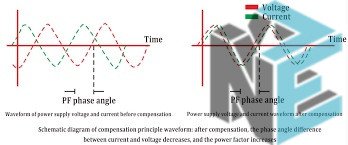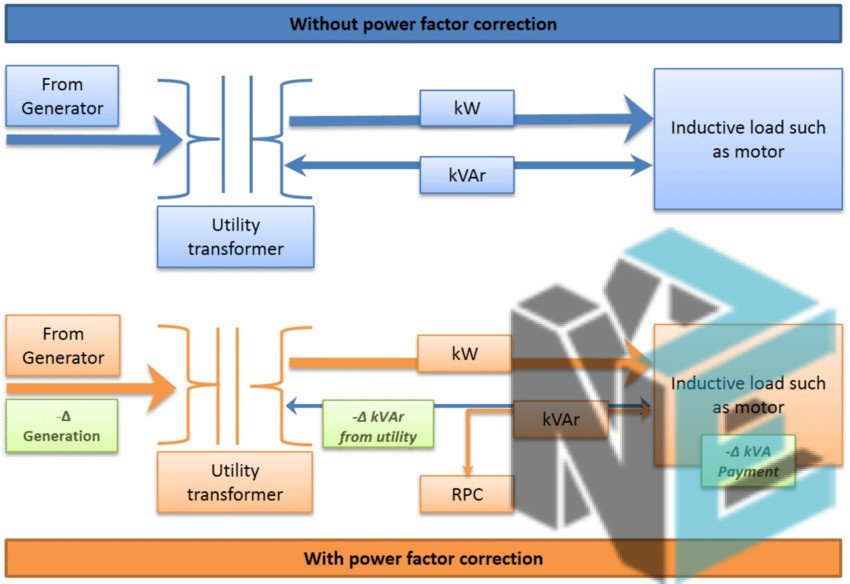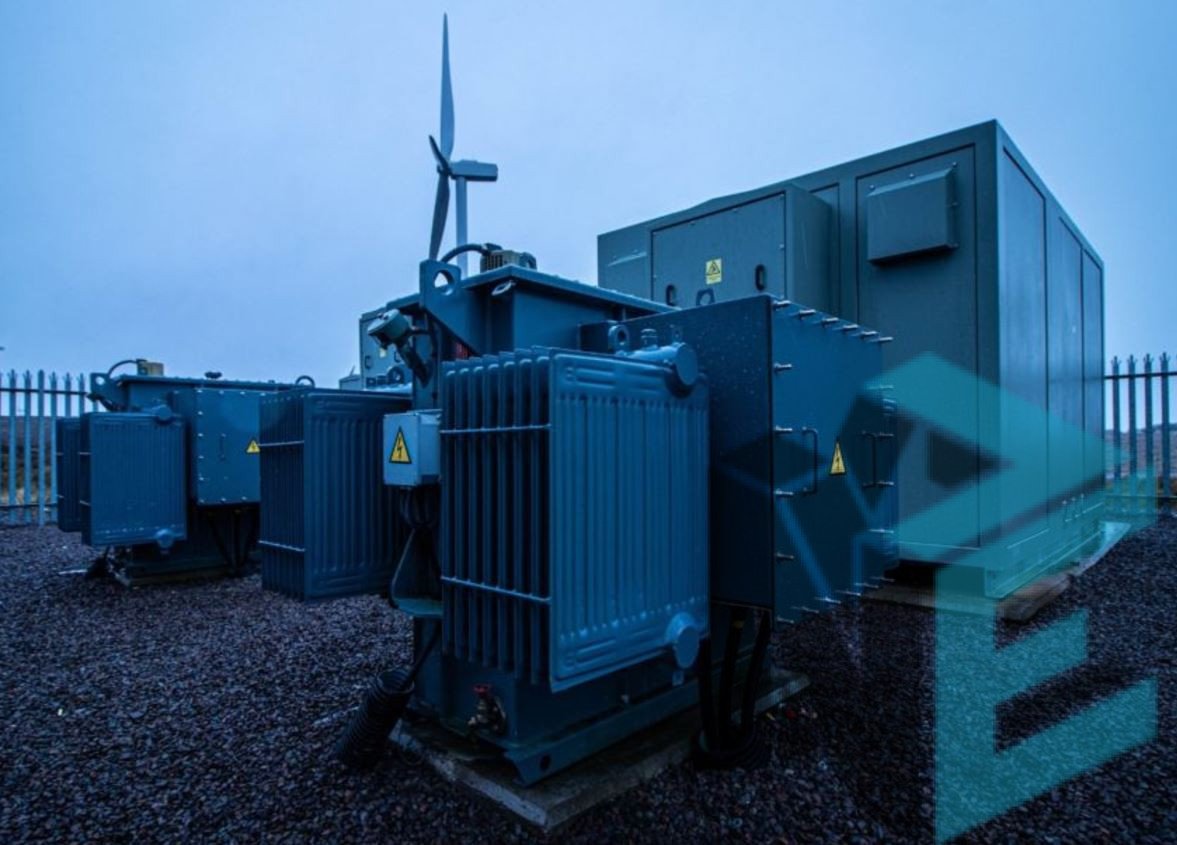Reactive Power Compensation is a crucial aspect of electrical power systems, designed to improve the efficiency, stability, and quality of the power supply. It addresses the issue of reactive power, which is an inherent part of AC (alternating current) systems, and ensures optimal performance of electrical equipment and the distribution network. This detailed explanation delves into the concept, its importance, and how it is implemented in modern power systems.
What is Reactive Power?
In an AC power system, electrical power is divided into two components:
- Active Power (P): The power consumed by electrical equipment to perform useful work, measured in watts (W). Examples include powering motors, lighting, and heating devices.
- Reactive Power (Q): The power used to create and sustain electromagnetic fields in inductive loads like motors, transformers, and inductors, measured in volt-amperes reactive (VAR). This power does not perform useful work but is essential for the proper functioning of AC systems.
The total power, known as apparent power (S), is a vector sum of active and reactive power:
S=P2+Q2
Reactive power creates a phase difference between voltage and current, which reduces the system’s efficiency. The ratio of active power to apparent power is known as the power factor (PF), and it ranges between 0 and 1. A low power factor indicates a high level of reactive power, leading to increased losses and inefficiencies.

Importance of Reactive Power Compensation
Reactive power compensation is vital for:
- Improving Power Factor: Enhancing the power factor reduces energy losses and improves the efficiency of power transmission and distribution systems.
- Reducing Transmission Losses: High reactive power increases current flow, causing more losses in transmission lines. Compensation minimizes these losses.
- Stabilizing Voltage Levels: Reactive power affects voltage stability. Proper compensation helps maintain consistent voltage levels across the system.
- Optimizing System Capacity: By reducing the burden of reactive power, the system can deliver more active power to consumers.
- Lowering Costs: Utilities often impose penalties for low power factors. Compensation reduces these penalties and operational costs.
- Enhancing Equipment Lifespan: It reduces the stress on equipment, such as transformers and generators, prolonging their operational life.
Types of Reactive Power Compensation
Reactive power compensation can be classified into two main types based on its location:
- Shunt Compensation: Installed parallel to the load or system. It is commonly used for voltage support and power factor correction.
- Series Compensation: Installed in series with the transmission line. It is mainly used to enhance power transfer capabilities and system stability.
Based on Control Mechanisms
- Static Compensation: Uses passive devices like capacitors and reactors.
- Dynamic Compensation: Involves active power electronics for real-time adjustments.
Methods of Reactive Power Compensation

There are several methods to achieve reactive power compensation. Below is a comprehensive overview:
1. Capacitor Banks
Capacitors are the most common devices for reactive power compensation. They supply reactive power to counteract inductive loads. Capacitor banks can be installed at:
- Load Centers: To improve power factor locally.
- Substations: To support the distribution network.
- Transmission Lines: To enhance system stability.
Advantages:
- Cost-effective.
- Simple installation and operation.
- Suitable for steady-state compensation.
Disadvantages:
- Limited to fixed compensation.
- May cause overcompensation during light load conditions.
2. Synchronous Condensers
A synchronous condenser is a synchronous machine operated without a mechanical load. It absorbs or supplies reactive power by adjusting its excitation.
Advantages:
- Provides dynamic compensation.
- Improves system inertia and voltage stability.
Disadvantages:
- High cost and maintenance requirements.
- Large physical size.
3. Static Var Compensators (SVCs)
SVCs are advanced systems that use power electronics to provide dynamic reactive power compensation. They typically consist of thyristor-controlled capacitors (TCC) and thyristor-controlled reactors (TCR).
Advantages:
- Fast response time.
- Adjustable compensation levels.
Disadvantages:
- Expensive compared to capacitor banks.
- Requires complex control systems.
4. STATCOM (Static Synchronous Compensator)
STATCOM is a modern power electronic device that provides real-time reactive power compensation. It uses voltage source converters (VSC) to inject or absorb reactive power.
Advantages:
- Extremely fast response time.
- Compact design.
- Operates effectively over a wide voltage range.
Disadvantages:
- High initial cost.
- Advanced technology requiring skilled personnel.
5. Distributed Generation (DG)
Renewable energy sources, such as wind and solar, can be integrated into the grid to provide reactive power support. Modern inverters used in DG systems can supply reactive power as needed.
Advantages:
- Promotes renewable energy usage.
- Reduces dependence on centralized compensation systems.
Disadvantages:
- Intermittent nature of renewable sources.
- Requires sophisticated control algorithms.
6. Hybrid Systems
Combining multiple compensation methods (e.g., SVCs with capacitor banks) provides a balance between cost, efficiency, and performance.
Advantages:
- Optimized performance.
- Versatility in handling different load conditions.
Disadvantages:
- Higher complexity.
- Increased installation and maintenance costs.
Steps to Implement Reactive Power Compensation
1. Load Analysis
- Measure the reactive power demand of the system.
- Analyze the power factor and identify areas with low performance.
2. Selection of Compensation Method
- Determine the best method based on cost, system requirements, and load characteristics.
3. Installation
- Install the compensation devices at appropriate locations (e.g., near inductive loads, substations, or transmission lines).
4. Testing and Commissioning
- Test the system to ensure it meets the required power factor and stability levels.
5. Monitoring and Maintenance
- Continuously monitor the power factor and system performance.
- Perform regular maintenance to ensure reliable operation.
Challenges and Future Trends
Challenges
- Cost of Advanced Technologies: Devices like STATCOMs and SVCs are expensive.
- Integration with Renewable Energy: Managing reactive power in systems with high renewable penetration is complex.
- Harmonics: Power electronic devices can introduce harmonics, requiring additional filtering.
Future Trends
- Smart Grids: Advanced control systems for real-time reactive power management.
- Artificial Intelligence (AI): AI-based algorithms for predictive maintenance and optimization.
- Energy Storage Systems: Batteries that provide reactive power support in addition to energy storage.
- Wide Deployment of STATCOMs: Compact and efficient solutions for future grids.
Reactive Power Compensation is indispensable for modern electrical systems. By improving efficiency, reducing costs, and stabilizing voltage, it ensures reliable power supply and supports the transition to more sustainable energy solutions.




